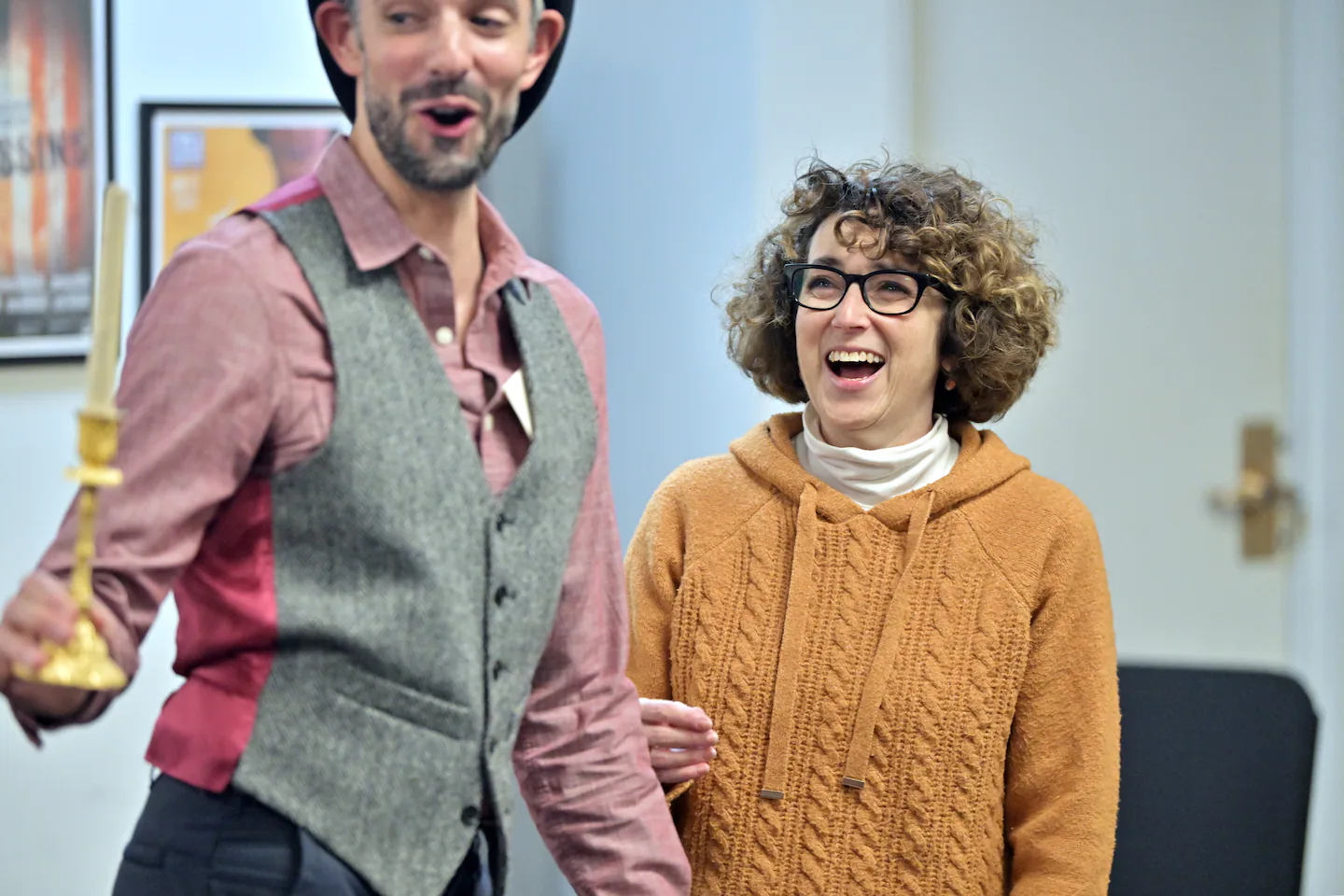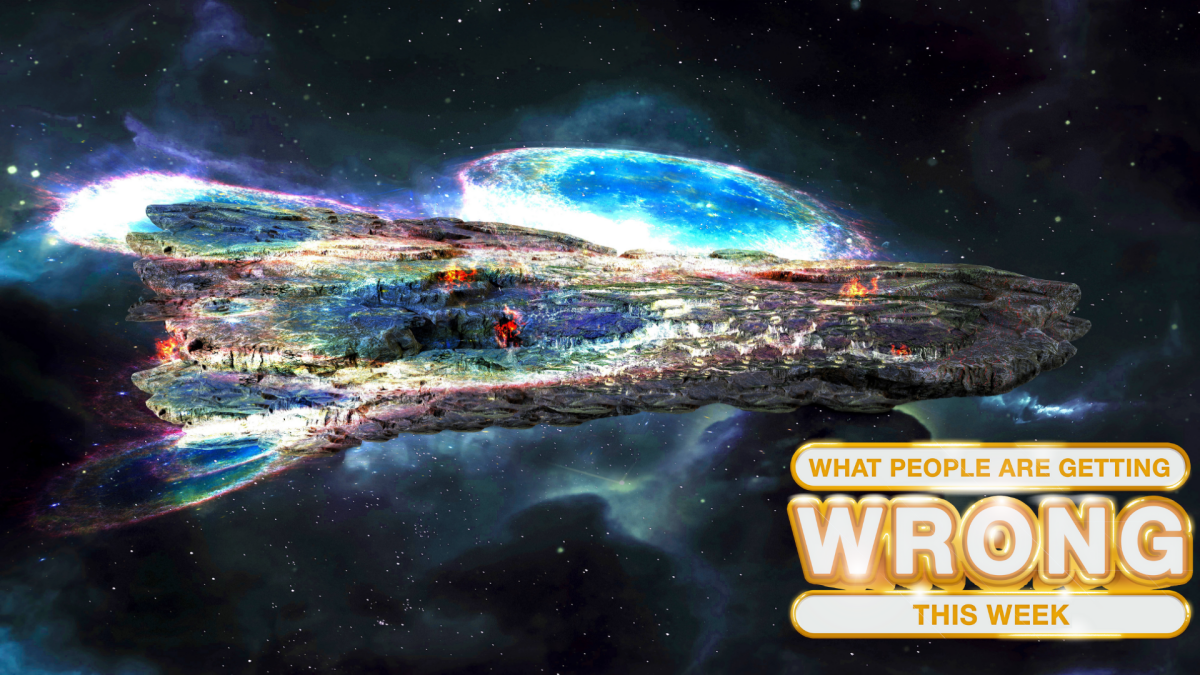Copyright The Boston Globe

Shanahan wanted to honor authors Arthur Conan Doyle and Charles Dickens’s original creations and Victorian-era settings, but he also “wanted to look at these stories and characters from a different angle and have the audience leave appreciating them in a different way,” he says. In his play, Scrooge has spent years disavowing his once-cantankerous, miserly ways and remaking himself into a kind and generous soul who cares deeply about others. Meanwhile, Sherlock Holmes (Paul Melendy) is down in the dumps. His longtime nemesis, Moriarty, is dead, having plunged to his death at Reichenbach Falls in a battle with Sherlock — as famously chronicled in the 1893 story “The Final Problem.” While Sherlock survived, rumors of his own demise have been swirling around London — and he’s wondering how to go on without his number one adversary to battle. “He’s feeling adrift. Depression and despair maybe sets in a bit,” Melendy says. “He’s lost his lust for life, and I think there’s a dash of PTSD. That battle with Moriarty, which is fresh in his mind, took a lot out of him, because he did almost die.” So when a grown-up Tiny Tim, now a caring doctor who runs a hospital for sick children, comes to Sherlock and asks him to investigate the suspicious death of a person much beloved to him — one Ebenezer Scrooge (Christopher Chew) — Sherlock must decide whether to come off the sidelines and get back in the crime-solving game. In addition to Melendy and Chew as Sherlock and Scrooge, the cast is stacked with Boston favorites, including Leigh Barrett, Mark Linehan, Michelle Moran, and Jon Vellante, each of whom takes on a variety of roles, such as Dr. Watson, Dr. Timothy Cratchit, the Countess of Morcar, Inspector Lestrade, Mrs. Dilber, and Scrooge’s grandniece Fanny Gardner, among others. While the popular depiction of Sherlock has been one of a fastidious, eccentric detective wearing a deerstalker cap and smoking a calabash pipe, Shanahan says the character is actually “difficult to dramatize because he’s an archetype. There’s no emotional change for him other than he has satisfied his craving to solve a mystery. In fact, he’s the real mystery at the center of the books. So I wanted to write a play where we say: Well, who’s really underneath all of that?” Known for his whirlwind, idiosyncratic comic inventions, wry sense of humor and quicksilver physicality, Melendy seems like a natural fit to play Sherlock, a man who may be mentally unraveling, but still has his sardonic wit. “I love searching for the humor in [playing him], even if he’s a curmudgeon,” Melendy says. Rejecting Dr. Watson’s Christmas Eve dinner invitation, an irritated Sherlock harrumphs, “There is no greater fool than one who shouts ‘Happy Christmas!’ in a city throughout which the foulest of mankind lurks ‘round every corner.” So who better than to rehabilitate a grumpy Sherlock than the reformed bah-humbugger himself, ol’ Ebenezer? “You put [Sherlock] up against the greatest ghost story ever written, and you try to see how these two things clash,” Shanahan says. “If I have a Sherlock who needs some redeeming, I figure Scrooge is the one who can give it.” After his death, Scrooge returns as a spirit to haunt Sherlock and try to teach him a lesson. As a paragon of science and rationality, the detective famously doesn’t believe in ghosts, so Scrooge’s sudden presence in supernatural form unnerves him. “All of a sudden there’s a figment of his imagination there that no one else can see,” Melendy says. “So that’s very jarring.” Eventually, Sherlock is shaken out of his stupor, so he can get on with solving the case of Ebenezer’s death, the robbery of a Countess’s precious diamond (inspired by the Christmas-set Sherlock story “The Adventure of the Blue Carbuncle”), and several other intertwined mysteries. The game is, once again, afoot. “Sherlock has been so wrapped up trying to stop Moriarty — because Moriarty thinks in big ideas, and it’s like playing this game of chess — that he’s forgotten why he does these things: to help people,” Melendy says. When director Ilyse Robbins first read the script, she saw all the location changes — hopscotching from Sherlock’s residence at 221B Baker Street, Scrooge’s house and Covent Garden to a theater, taverns, and the dark streets of London — and envisioned a fleet-footed murder-mystery filled with roller coaster pacing. “I was hooked on page one. My brain immediately started solving the puzzle,” says Robbins, who has worked on “A Christmas Carol” as a choreographer or performer for some 20 years at various local theaters. There will be a bridge spanning across the theater’s raised platforms, along with swirling fog, falling snow, and shadowy atmospherics. “I want it to feel like London of the 1890s. I want it to feel like a ghost story,” Robbins says. “There has to be a drive to it, and the stakes need to feel high.” Shanahan has made something of a specialty out of writing and directing mysteries, including an adaptation of Agatha Christie’s masterpiece “The Murder of Roger Ackroyd” and the Hitchcock films “Dial M for Murder” and “The 39 Steps.” Growing up, he read lots of Sherlock Holmes stories and always has a mystery novel sitting by his bedside. On a family trip to London as a kid, he remembers visiting 221B Baker Street. The man who worked at the bank that occupied the building showed them stacks of envelopes filled with letters received from fans. “People were writing to a fictional person, who they must have known was fictional, and you realize that people are crying out for help,” Shanahan says. “I think we emotionally respond to [Sherlock and Scrooge] because at their core, they speak to really deep needs in us.” In many ways, Sherlock has to absorb some of the same lessons that Scrooge learned — that change is possible no matter how entrenched, embittered, resentful, or regretful you feel. As Sherlock hears more about Scrooge’s long-ago transformation, he’s left wondering: “How did this man change? And is it possible for someone to change?,” as Shanahan puts it. “By investigating [Scrooge’s reformation], he’s investigating whether it’s possible to come back from being miserable and actually find your best self. Can I open myself up and be of service to others?” A SHERLOCK CAROL



